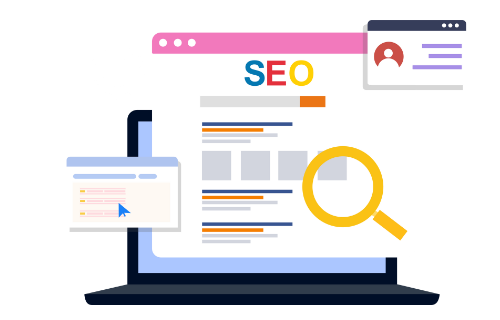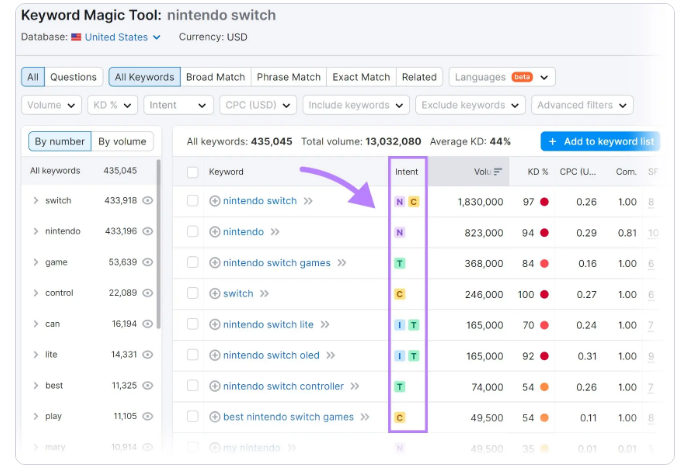Are you looking the best and outstanding on page Seo service in UAE so it is the perfect place for you Use our outstanding on page SEO specialist in Dubai to fully capitalize on the power of your website. Our area of expertise is improving your website’s search engine ranking. We can help with everything from user-friendly content to strategic keywords. Today, to increase your internet visibility in the online world, making sure your website is easy to find and understand is really important. That’s what we’re here for. Our service helps improve your website’s visibility so more people can discover it. We’ll adjust things like We’ll cover efficient techniques for improving your web pages on page SEO strategy in this talk, with a particular focus on search intent optimization, title tag optimization, internal linking structure optimization, and URL structure optimization.


One of the key steps for effective on-site SEO is to produce valuable content that aligns with what your audience is looking for. Start by researching keywords to discover topics that are relevant to your audience and identify the specific words and phrases they use in their searches. When people come to your website, they are searching for information that will fulfill their needs and provide them with relevance. For this reason, we carefully choose material for your website that is purposefully created to be teaching and user-friendly, telling Google that it is worthwhile.
To make sure that your content writing is current and well-researched, we go through a demanding research process and update frequently. We naturally integrate the most powerful keywords into your content while offering useful information to keep visitors interested. These initiatives give your website a competitive edge by raising its search engine rating and enhancing the overall user experience.
Besides naturally using your keyword in your content, it’s important to put it in certain spots on your page to tell Google what you want to rank for. Here are the places where you should use your keyword:

Each page on your website has two titles. The “title tag” is what shows up on the search engine results page (SERP) and is where you should put your keyword for the most impact. The “H1 tag” is the title you see when you’re on the page itself. Sometimes they’re the same, but not always—it depends on the page.
To optimize your titles, be sure to:
Here’s how we can rephrase the provided information in a user-friendly and informative manner:
The meta description is a brief summary displayed below the title tag on the search engine results page (SERP). While Google may sometimes generate its description, it’s crucial to optimize it for SEO. Google uses this description to comprehend the page’s content when crawling it.
Here’s a simpler and more user-friendly version of the provided information:

When optimizing blog posts/ content writing for SEO, it’s important to include both internal and external links. External links: Look for 1-3 pages that relate to your topic on other websites with high domain authority. Linking to them in your post helps establish trust with Google. Internal links: Within your post, link to other relevant blog posts on your site. This creates multiple pathways for Google to navigate your site. The number of internal links depends on the post’s length and the availability of relevant content to link to. Ensure the links are related to the page and use appropriate anchor text.

Google advises using simple, easy-to-understand URLs for your website. Instead of using random numbers or full sentences, include words that directly relate to your content. Many website themes generate complex URLs by default, so it’s important to customize them before publishing. Incorporating your target keyword into the URL can further reinforce the relevance of your content.
An unfriendly URL could resemble this:

To make it more useful and easier to understand, you could update it like this:

The more information Google has about a page, the better it can comprehend its content. When Google understands what a page is about, it can more accurately match it with relevant search queries.
Including images in your content can enhance your visibility on Google Images, leading to more website traffic. A great starting point for optimizing your images is by writing descriptive alt text for them. Alt text, or alternative text, is a brief description of an image included in the HTML code of a webpage.
Alt text serves two primary purposes:
Sure, here’s a make more comprehensible and user-friendly rewrite:
Alt text serves two main purposes:
It helps search engines know what’s in the picture.
It provides descriptions of images for people using screen readers.
For example, instead of a complicated sentence like “rewrite it with basic English and informative and user friendly,” you could say:
“Here’s an easy way to create alt text that everyone can understand and find helpful.
It offers context for search engine crawlers, helping them understand the content of the image.
It enables individuals using screen readers to receive descriptions of images, enhancing accessibility and inclusivity.

Here are some simple tips for writing good alt text:
Keep it short. Screen readers only read around 125 characters of alt text. Keep it short and sweet for better understanding!”
Use your target keyword if it fits naturally, but don’t overdo it.
Skip alt text for decorative images like page breaks or search icons.
Don’t use extra words like ‘image of’ or ‘picture of.’ Keep it simple and to the point. Use Site Audit’s “Issues” report to find missing alt text on your site. If you have many errors, search for “alt attributes” in the search bar.

Here are some simple ways to make your images better:

Drop us your inquiry our A-One web design and digital marketing agency knows the art of how to craft the diamond, Let’s Work and grow together.